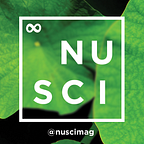How genealogy cracked the case
Beiyu (Pam) Lin, Biology, 2021
On the first day of April in 1988, the midwestern town of Fort Wayne, Indiana was put into a stupor. 8-year-old April Tinsley had vanished into thin air while on a short walk from a friend’s house to her own. She had been on a simple mission to retrieve her umbrella. Just three days later, her body was discovered in a roadside ditch, asphyxiated and sexually assaulted. It wasn’t until 30 years later that the cold case was finally cracked wide open through an emerging field in forensics: genetic genealogy.
One may say that the man eventually convicted for Tinsley’s death nearly three decades after the fact was betrayed by his own family. After all, his demise was only made possible with the use of DNA innocently submitted by his relatives to ancestry websites.
In 2018, investigators sent a DNA sample retrieved from the original crime scene in 1988 to Parabon Nanolabs, a DNA technology company based in West Virginia. Their scientists crafted a profile using that sample and uploaded it to a website called GEDmatch, a third-party site that allows users to upload their own private DNA profile results, usually obtained from ancestry websites. The purpose of GEDmatch is to conglomerate submitted DNA profiles into a public database in hopes of potentially connecting with family online. After the site’s algorithm parsed through millions of public DNA profiles, it came back with 12 matches. From there, it was the sleuthing of genetic genealogists that narrowed down an elaborate cluster of four potential family trees to just one man.
From there, it was the sleuthing of genetic genealogists that narrowed down an elaborate cluster of four potential family trees to just one man.
The way these DNA profiles are created comes down to understanding of the human genome. Parabon Nanolabs has a department allocated specifically for next-generation forensics investigation; they use a modernized version of genealogical research, which can circumvent limitations often faced by police methods. In particular, they study single nucleotide polymorphisms (SNP), which are used by ancestry sites, rather than short tandem repeat (STR), which are used in police databases. SNPs and STRs are both molecular markers passed down through generations, making them good places to start in tracking lineage. However, while SNPs are base substitutions, insertions, or deletions, STRs are stretches of repeating nucleotide sequences. The main advantages of SNP analysis over STRs in forensic investigation are that SNPs have lower mutation rates, are particularly useful for analysis of DNA that has been degraded, and can detect genetic relatedness at a greater distance.
Since Parabon is able to craft profiles from SNPs, which match public profiles on ancestry websites, they are able to compare the unknown individual’s DNA with approximately 1 million others, allowing an entirely new population not previously accessible to the police force to be thoroughly investigated. Any two individuals that have sufficiently long similar stretches of DNA are then deemed related.
After DNA linkages are found between the unknown sample and profiles online, it still takes the dedication of genetic genealogists to construct family trees to pinpoint a suspect. In Tinsley’s case, genealogists scrutinized social media, newspapers, and any potentially helpful source that could help clarify relationships between relatives and build onto the emerging tree. Once setting their sights on John D. Miller, a local recluse who lived near Fort Wayne, police retrieved a piece of trash outside of his trailer park to use for DNA testing. When the results came back, they had their match.
In a twisted way, investigators can use one’s own familial roots against them to fight for justice.
Coming fresh off a string of genetic genealogy success stories, the increased utilization of this new technique may seem compelling. In a twisted way, investigators can use one’s own familial roots against them to fight for justice. However, with the use of civilian DNA profiles found online, the legality of genetic genealogy is now being questioned as well. In fact, when GEDmatch was again used in 2019 to locate an assault case suspect, it was actually in violation of the website’s terms. The ordeal sparked outrage among GEDmatch users who questioned the legitimacy of their consent.
While the benefits of the new forensic tool are being explored, the legal challenges are also slowly coming out of the waters. With the inevitable increasing use of GEDmatch in police investigation, it leaves us with the question of where exactly the line should be drawn.
